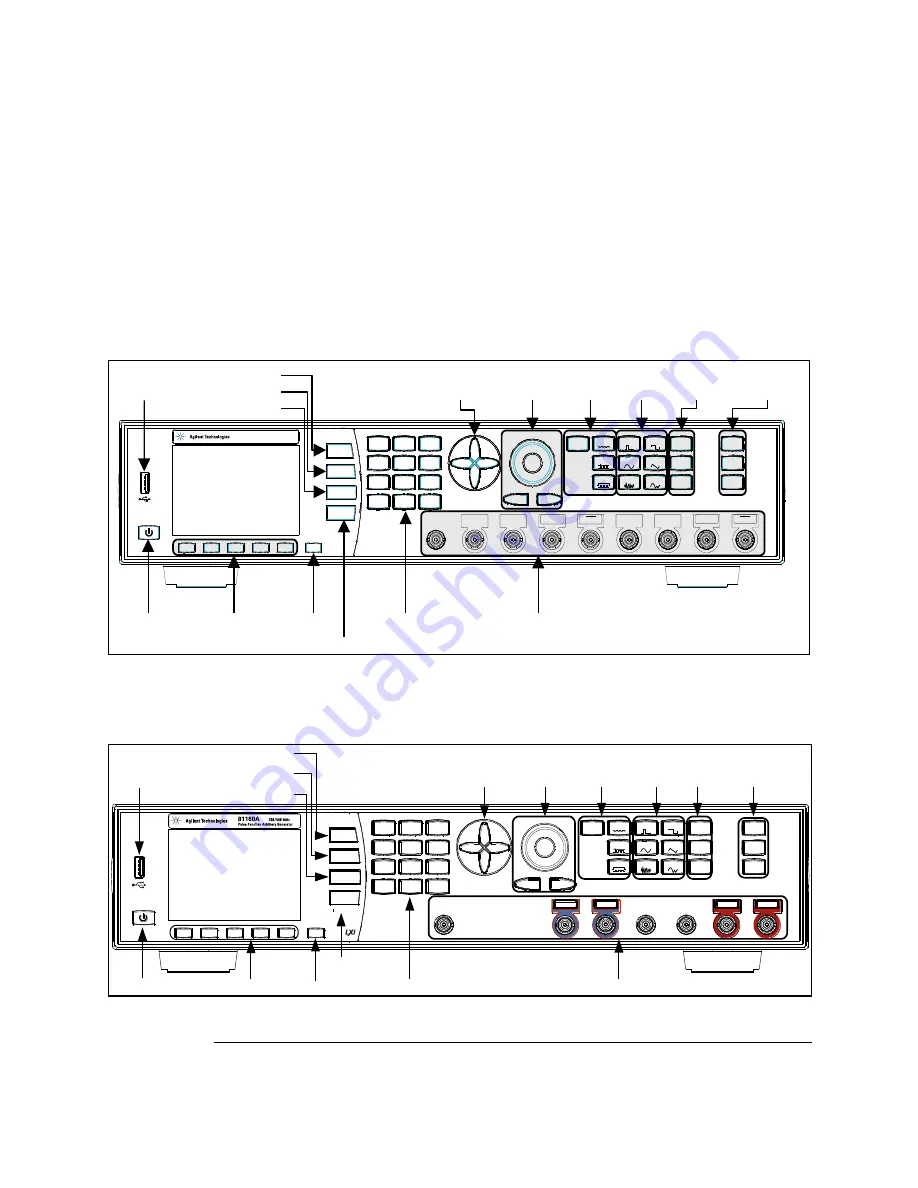
Installing the 81150A/81160A
2.1
The Front Panel
Introduction
The instrument is mainly operated from the front panel, when used for
bench top testing.
Now that you have unpacked the instrument and plugged it in, let us take a
look at the main elements of the Front Panel. These are shown and
explained in brief below.
Ch 1
Ch 2
Coupling
Graph
Cancel
7
8
9
4
5
6
1
2
3
0
.
+/-
Out 2
Out 2
Out 1
Out 1
Man
Cont
Pulse
Square
Mod
Store/
Recall
Utility
Help
Sweep
Burst
Arb
Ramp
Noise
Sine
Trig
Gated
max. ±15V
Trigger Out 2
Strobe Out 2
External In
Trigger Out 1
Strobe Out 1
81150A
Pulse Function Arbitrary Generator
120 MHz
Local
Power Switch
Menu Softkeys
Cancel
Graph / Local
Numeric Keypad
Inputs / Outputs
USB Host
Channel 1 Selection
Channel Coupling
Channel 2 Selection
Navigation
Keys
Rotary Knob
Cursor Keys
Trigger
Modes
Waveform
Type
Advanced
Modes
Special
Function Keys
Front-panel of the 81150A
Ch 1
Ch 2
Coupli ng
Gr aph
Ca n c e l
L o c a l
m a x . ± 1 0 V
E x t e r n a l I n
S y n c O u t A S y n c O u t B
7
8
9
4
5
6
1
2
3
0
.
+/-
Out 2
Out 2
Out 1
Out 1
Man
Cont
Pulse
Square
Mod
Store/
Recall
Utility
Help
Sweep
Burst
Arb
Ramp
Noise
Sine
Trig
Gated
Channel 1 Selection
Channel Coupling
Channel 2 Selection
USB Host
Power Switch
Menu Softkeys
Cancel
Graph / Local
Numeric Keypad
Inputs / Outputs
Special
Function Keys
Advanced
Modes
Waveform
Type
Trigger
Modes
Rotary Knob
Cursor Keys
Navigation
Keys
Front-panel of the 81160A
Summary of Contents for 81150A
Page 1: ...Agilent Pulse Function Arbitrary Noise Generator 81150A and 81160A Getting Started Guide...
Page 6: ...Introduction 4 5 Operating Environment 99 4 6 Cleaning Recommendation 100...
Page 101: ...Installation and Maintenance 81150A and 81160A Getting Started Guide 101...
Page 102: ...Copyright Agilent Technologies 2011 First Edition March 2011 Printed in Germany...











































